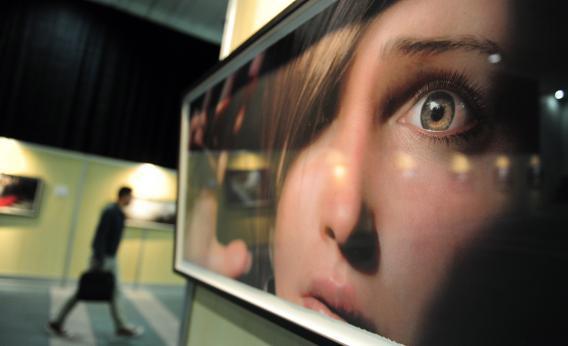Can social solace be found in the uncanny valley? Video games meet psychological healing in a recent collaboration between the University of Central Florida Anxiety Disorders Clinic and Virtually Better, an Atlanta company that explores virtual reality-based treatments for mental illness.
The two organizations have developed a computer simulation program that allows children suffering from social phobia to practice interacting with avatars. This summer, 30 patients aged 8 to 12 will participate in a three-month study testing the new technology. The avatars, controlled by clinicians in another room, guide the kids through four levels of social engagement: greeting, giving and receiving compliments, asking questions, and being assertive. Encounters follow loose scripts (a conversation can take up to 54 different directions, according to one researcher) and allow the children to rehearse skills that will eventually help them react spontaneously and gracefully in the flesh-and-blood world. Scenarios feature six main characters, including a “cool, popular” girl who says things like, “Do you want to sit together at lunch?”and a mean boy who demands money. Rounding out the cast are a smart girl and three kindly adults: a principal, a classroom teacher, and a gym teacher.
Interactions fall into the categories of “easy,” “intermediate,” and “hard”—with “hard” tasks requiring kids to stand up to a bully or initiate a conversation with an authority figure. The children themselves do not use avatars, but speak aloud—as themselves—to the animations on the computer screen. As Nina Wong, a clinician at the University of Central Florida, emphasized, these online exercises are meant to supplement, not supplant, the face-to-face training provided by the facility to socially phobic patients.
Yet even if used primarily to drill techniques first introduced in a real-world context, it’s unclear whether avatars are as effective as actual people in helping kids along the path to socialization. “The best way to teach social confidence is through interaction with friendly, non-anxious peers,” says Wong. For the clinic, however, those situations prove expensive and hard to coordinate.
Thespians know that repeating your own lines has value even in the absence of the rest of the ensemble. And virtual strategies for tackling other anxiety disorders, such as PTSD, boast a promising record of success. Finally, it seems to us that the art of dealing with online personae is probably worth cultivating, regardless of whether it carries over into real-world interactions. (If the researchers decide to seek out broader applications for their instructional avatars, Facebook stands a chance of becoming a far more civilized place.)
